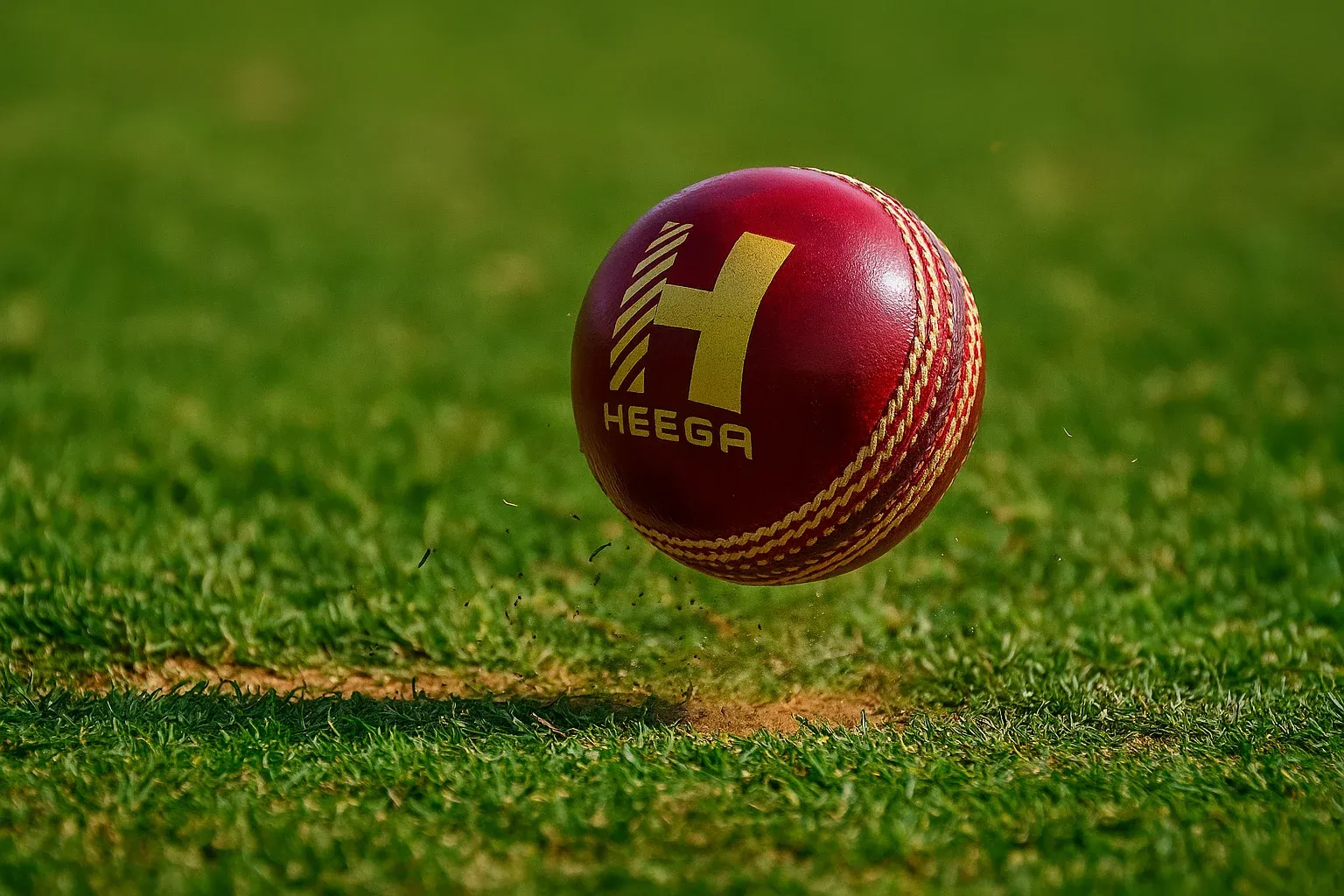
Every cricketer, whether bowler, batsman, or fan, has noticed one fascinating truth: no two bounces are ever the same. A delivery that rises sharply off the pitch can be followed by one that stays surprisingly low. Sometimes the ball seams away viciously, while other times it skids through with no life.
So, why does this happen? The secret lies in the science of a cricket ball—its construction, condition, and how it interacts with the pitch and environment.
In this blog, we’ll dive deep into the factors that influence bounce and movement, helping you understand the hidden complexities that make cricket such an unpredictable and thrilling sport.
The Anatomy of a Cricket Ball
Before we understand bounce, let’s break down what makes up a cricket ball:
- Core: Layers of cork and rubber wound tightly. Provides hardness and rebound.
- Leather Cover: Typically four pieces of leather stitched together. Affects grip and shine.
- Seam: Raised stitching that influences swing and seam movement.
- Polish/Shine: Applied to reduce wear and maintain movement in the air.
Each part plays a role in how the ball reacts after pitching.
Factors That Affect Bounce
1. Seam Orientation
- Bowlers often use the seam to generate extra movement.
- A perfectly upright seam grips the pitch, creating unpredictable bounce or deviation.
- If the seam wobbles, the ball tends to skid and bounce lower.
Impact on Bounce:
- Upright seam → higher, unpredictable bounce.
- Wobbling seam → skiddy, flatter bounce.
2. Shine and Surface Texture
- A new ball has a hard, smooth surface that comes off the pitch faster.
- As the ball wears, one side roughens, while the other remains shiny.
- This imbalance influences both swing in the air and bounce after impact.
Impact on Bounce:
- New ball → sharp, lively bounce.
- Old ball → softer bounce, more grip for spinners.
3. Ball Hardness
- A fresh ball is firm and hard, helping it rebound energetically off the surface.
- With overs bowled, the leather softens, reducing bounce height.
Impact on Bounce:
- Hard ball → steeper bounce, especially for fast bowlers.
- Soft ball → lower bounce, aiding spinners and cutters.
4. Pitch Conditions
The pitch is arguably the most important factor in determining bounce:
- Green Pitches: Extra grass allows seamers to get steep bounce.
- Dry Pitches: Cracks and dryness can make the ball rise unpredictably.
- Dusty/Subcontinental Tracks: The ball grips more, staying low or spinning sharply.
Impact on Bounce:
- Grass = higher bounce.
- Dust = lower bounce.
- Cracks = variable bounce (unpredictable for batsmen).
5. Bowling Speed and Style
- Fast bowlers hit the surface harder, extracting maximum bounce.
- Medium pacers get moderate bounce but may use seam to generate unpredictability.
- Spinners rely on revolutions to make the ball grip and bounce differently.
Impact on Bounce:
- Pace = speed + steep bounce.
- Spin = grip + variable bounce.
6. Environmental Factors
- Humidity: Helps maintain shine, affecting swing but also how the ball lands.
- Heat: Dries out the pitch, creating cracks for uneven bounce.
- Dew: Softens the ball, making bounce lower.
Impact on Bounce:
- Humid = consistent bounce.
- Dry/Hot = variable bounce.
- Dew = skiddy, reduced bounce.
The Physics Behind Bounce
When a cricket ball hits the pitch:
- Energy Transfer – Some energy is absorbed by the pitch, some returned to the ball.
- Friction with Seam/Leather – Determines whether the ball grips or skids.
- Spin Rate – Higher revolutions = more deviation in bounce.
This combination creates the endless variety of deliveries that keep batsmen guessing.
Real Match Examples of Bounce Variations
- Perth, Australia (WACA ground): Known for steep bounce due to hard pitches and pace-friendly conditions.
- Chennai, India (Chepauk): Dry surface gives low bounce but massive turn for spinners.
- Lord’s, England: Swing-friendly conditions with moderate bounce, often influenced by overcast weather.
These differences show how the same ball can behave in entirely different ways around the world.
How Players Adjust to Bounce
For Bowlers:
- Seamers exploit upright seam and pitch conditions.
- Spinners vary pace and revolutions to deceive batsmen.
For Batsmen:
- On bouncy tracks: Play with soft hands and avoid hard drives.
- On low tracks: Get forward early, keep the bat close to the body.
- On variable pitches: Focus on patience and waiting for bad deliveries.
Why Bounce Variability Makes Cricket Unique
Unlike sports with standardized surfaces (like tennis courts or football fields), cricket thrives on pitch differences and ball condition.
This variability adds drama:
- Bowlers find new ways to attack.
- Batsmen must constantly adapt.
- Fans never know what’s coming next.
It’s this unpredictability that makes cricket not just a sport, but a battle of science, skill, and adaptability.
Conclusion
Every bounce in cricket tells a story—of the ball’s seam, shine, hardness, the pitch beneath it, and the bowler delivering it. From the lively bounce of a new ball on a green pitch to the deceptive skid of an old ball on dusty tracks, cricket thrives on this unpredictability.
Understanding the science of a cricket ball not only deepens your appreciation for the game but also highlights why adapting to bounce is a skill that separates good players from great ones.
At Heega Sports, we craft cricket balls with precision, designed for consistency, durability, and peak performance—so that every bounce keeps the game alive.
Shop Now – Explore Heega Cricket Balls Built for Every Condition